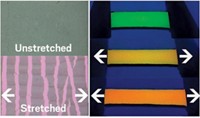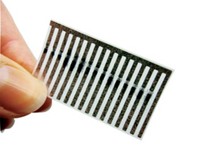Advertisement
Grab your lab coat. Let's get started
Welcome!
Welcome!
Create an account below to get 6 C&EN articles per month, receive newsletters and more - all free.
It seems this is your first time logging in online. Please enter the following information to continue.
As an ACS member you automatically get access to this site. All we need is few more details to create your reading experience.
Not you? Sign in with a different account.
Not you? Sign in with a different account.
ERROR 1
ERROR 1
ERROR 2
ERROR 2
ERROR 2
ERROR 2
ERROR 2
Password and Confirm password must match.
If you have an ACS member number, please enter it here so we can link this account to your membership. (optional)
ERROR 2
ACS values your privacy. By submitting your information, you are gaining access to C&EN and subscribing to our weekly newsletter. We use the information you provide to make your reading experience better, and we will never sell your data to third party members.
Nanomaterials
Paper structures become 3D semiconductors after slow-heating process
Highly porous material with tunable properties could be a platform for lightweight, stretchable, sustainable electronics
by Prachi Patel, special to C&EN
May 20, 2022

Using cellulose nanofibers from wood, researchers have made paper that can be tuned using a slow heat treatment to be effective semiconductors, some almost as conductive as metals (ACS Nano 2022, DOI: 10.1021/acsnano.1c10728). Then, with folding, cutting, and slotting techniques taken from origami and kirigami, they made flexible, stretchable structures from the paper that can be used in sensors and electrodes. The advance provides a path for creating tailor-made electronic devices using renewable materials.
Three-dimensional materials made of semiconductor nanofibers or nanoparticles have emerged recently as promising candidates for electronic applications. For example, the materials’ nanoscale and microscale structures give them a large surface area for adsorbing nearby molecules, which can change a material’s conductivity and be leveraged in electronic devices like gas sensors.
But making these structures from scratch is hard. Researchers have typically 3D printed metal oxide nanofibers and graphene oxide sheets to make structured semiconductors. Then they rely on doping to tune the materials’ electronic properties, which can increase conductivity only to a certain extent.

Hirotaka Koga of Osaka University, Kazuki Nagashima of the University of Tokyo, and their colleagues wanted to get around this problem by avoiding 3D printers and doping altogether. To create small-scale structures over a large area, they freeze-dried a dispersion of cellulose nanofibers extracted from wood pulp, creating cellulose nanofiber paper—thin tangled mats of nanofibers riddled with nanosized or microsized pores.
Heating cellulose nanofiber paper is known to make it conductive, but heat can also trigger carbon and hydrogen atoms in the material to react and escape as a hydrocarbon gas, damaging the paper’s nanostructures and reducing its permeability and surface area. So the researchers came up with a gradual heating process to change the paper’s electronic properties. They treat the paper with iodine vapor, and then subject it to a slow stepwise increase in heat over the course of many hours. Hydrogen atoms in the cellulose prefer to react with iodine over carbon, which keeps the cellulose’s carbon framework intact, preserving the paper’s nanostructures. The heat-treated paper behaves like a semiconductor with conductivity that increases depending on the final temperature of the heat treatment.
The researchers created 3D objects with the paper using origami and kirigami to showcase their versatility. A waffle-patterned doughnut-shaped 3D object, for instance, could be useful for high-velocity gas sensing applications, Koga says.
By tweaking the heat treatment, the nanofiber paper’s electronic properties could be tuned for various applications. The conductivity of paper treated at 600 °C, for instance, increases with increasing humidity, so they made a water vapor sensor with it, as well as a stretchable device that could detect exhaled moisture seeping through a face mask. The most conductive paper the researchers made, which they heated to 1,100 °C, was used as an electrode in a glucose-powered fuel cell that produced enough power to light a small lamp.
While efforts so far have focused on making 2D electronic devices on renewable cellulose nanofiber paper, the unique 3D microscopic and macroscopic structures open up new possibilities, says J. Carson Meredith, a chemical and biological engineer at the Georgia Institute of Technology and cellulose nanomaterial expert. “The large range of structural scale, shape, flexibility, and electronic functionality combined onto a renewable cellulose nanofiber base material offers a unique platform.”





Join the conversation
Contact the reporter
Submit a Letter to the Editor for publication
Engage with us on Twitter